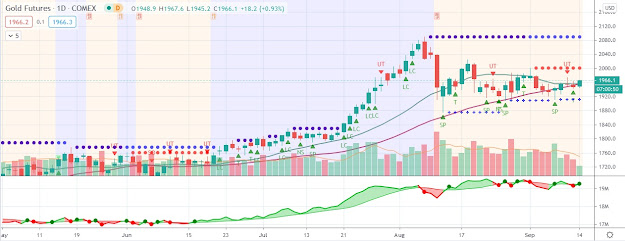Gold price dropped $19.05, or 1.2%, to $1,586.07 per ounce on Friday following the latest U.S. jobs report
The gold price dropped $19.05, or 1.2%, to $1,586.07 per ounce on Friday following the latest U.S. jobs report. The spot price of gold
initially climbed to $1,609.48 after the June non-farm payrolls data,
but quickly reversed course as strength in the U.S. dollar put pressure
on the broader commodities complex. With this morning’s gold price
weakness, the yellow metal is now on pace for a weekly decline of 0.8%.
The U.S. Labor Department announced on Friday that payrolls increased by 80,000 in June, below the 100,000 consensus estimate among economists. The unemployment rate remained unchanged at 8.2%, which was in-line with expectations. Private sector payrolls, which exclude government workers, rose by just 84,000 – the smallest amount in ten months.
While the gold price generally reacts favorably to disappointing economic data, in recent months the yellow metal has traded more like a commodity than a currency. Furthermore, it has displayed an increased negative correlation with the U.S. dollar – which has served as a safe haven amid escalating sovereign debt concerns in Europe.
“We are of the view that during election years there is ample pressure to maintain status quo for all events that could appear to offer weakness to the current government,” CIBC wrote. “Implementation of QE3 would be an admission that the government is not winning the economic war and provide fodder for the Republicans. In addition, with most of the rhetoric from both parties centering on future benefits that will be implemented, it is not surprising to see a strong dollar evolving during a period when we would measure the success of advancement as marginal at best. A weak euro is the main cause of the stronger dollar but it is our view that both currencies are weak and likely to remain weak.”
However, CIBC predicted that regardless of the election’s outcome, QE3 is far more likely in 2013. It based this view on the belief that policymakers will be much less concerned with the political implications of further easing and much more focused on providing support for the sluggish U.S. economy. As a result, the firm reiterated its $2,000 average gold price forecast for next year.
The U.S. Labor Department announced on Friday that payrolls increased by 80,000 in June, below the 100,000 consensus estimate among economists. The unemployment rate remained unchanged at 8.2%, which was in-line with expectations. Private sector payrolls, which exclude government workers, rose by just 84,000 – the smallest amount in ten months.
While the gold price generally reacts favorably to disappointing economic data, in recent months the yellow metal has traded more like a commodity than a currency. Furthermore, it has displayed an increased negative correlation with the U.S. dollar – which has served as a safe haven amid escalating sovereign debt concerns in Europe.
“We are of the view that during election years there is ample pressure to maintain status quo for all events that could appear to offer weakness to the current government,” CIBC wrote. “Implementation of QE3 would be an admission that the government is not winning the economic war and provide fodder for the Republicans. In addition, with most of the rhetoric from both parties centering on future benefits that will be implemented, it is not surprising to see a strong dollar evolving during a period when we would measure the success of advancement as marginal at best. A weak euro is the main cause of the stronger dollar but it is our view that both currencies are weak and likely to remain weak.”
However, CIBC predicted that regardless of the election’s outcome, QE3 is far more likely in 2013. It based this view on the belief that policymakers will be much less concerned with the political implications of further easing and much more focused on providing support for the sluggish U.S. economy. As a result, the firm reiterated its $2,000 average gold price forecast for next year.




Comments
Post a Comment